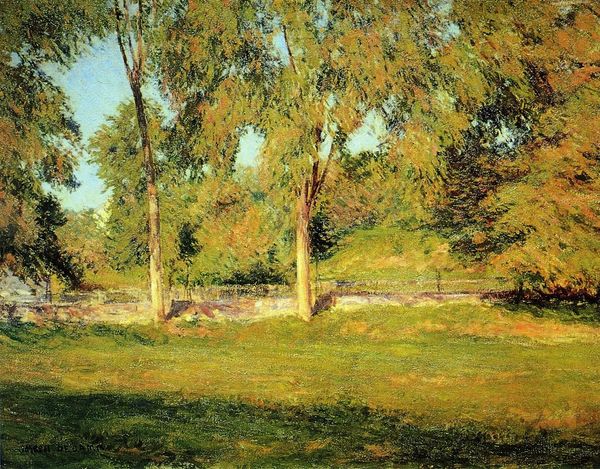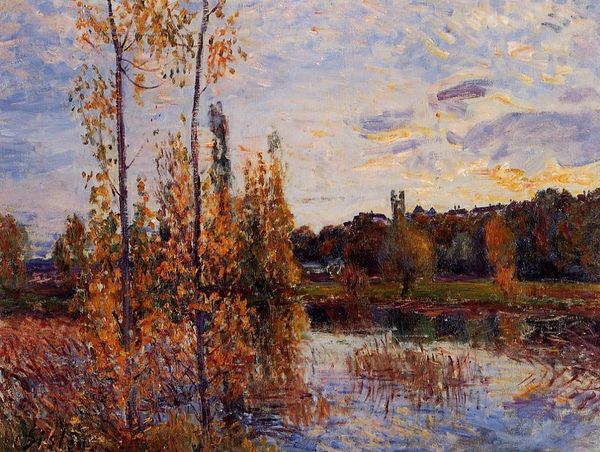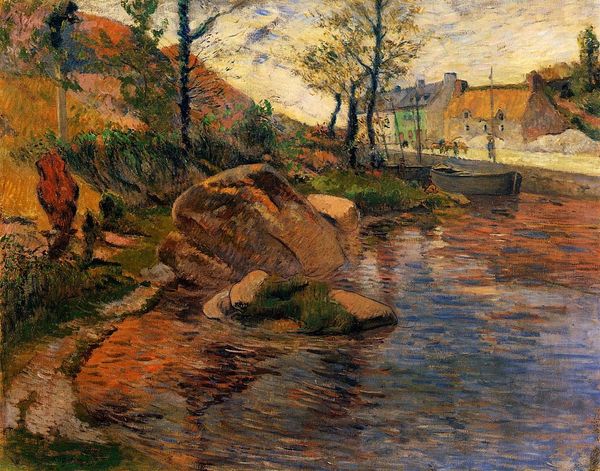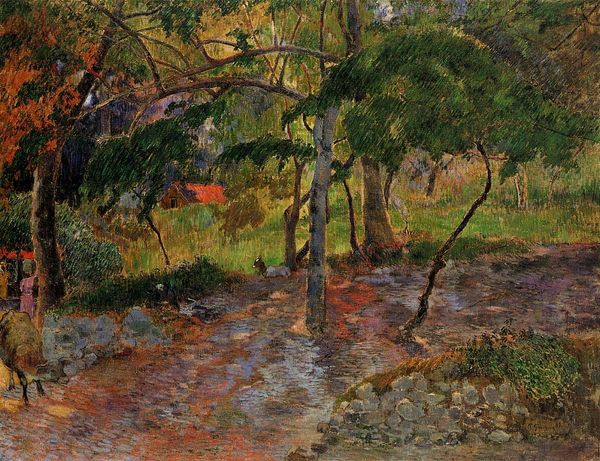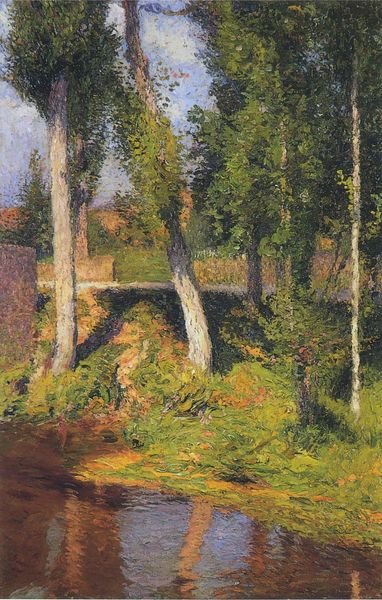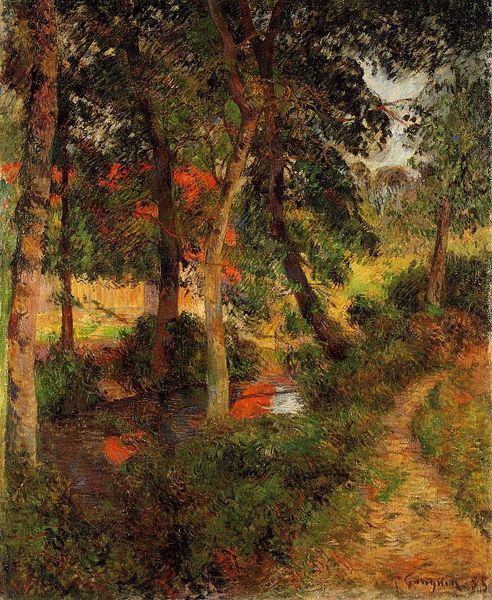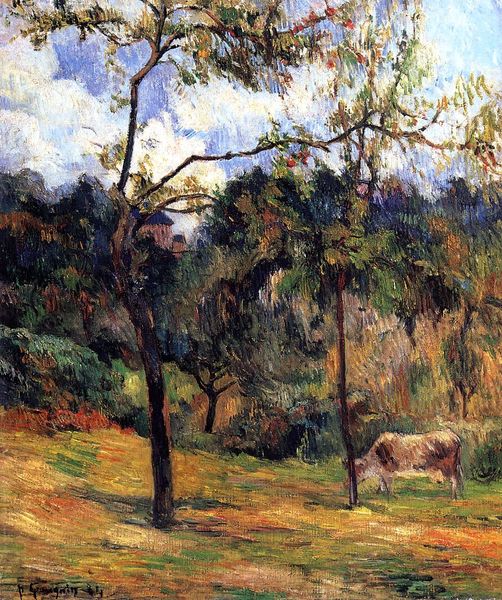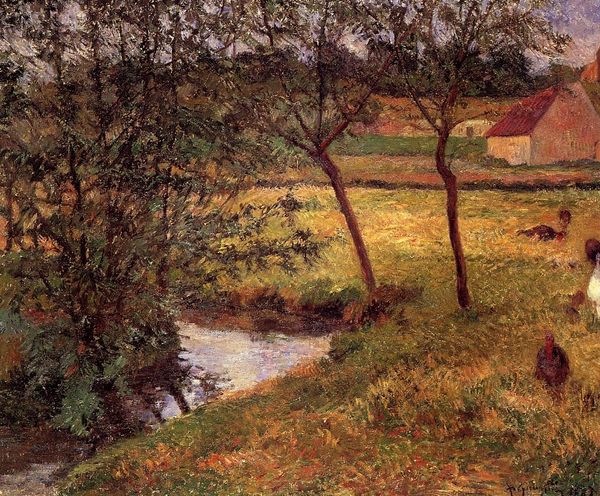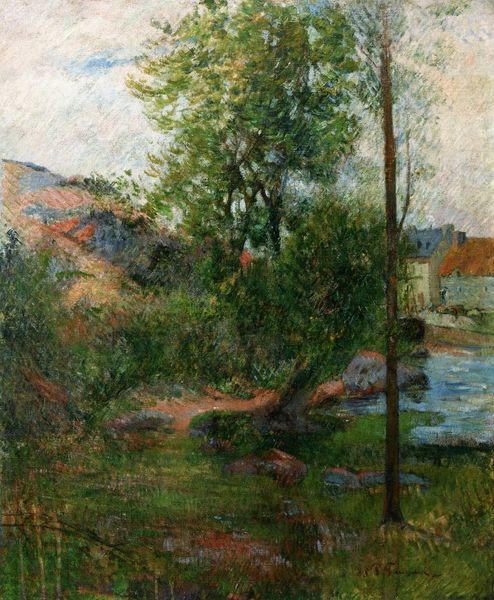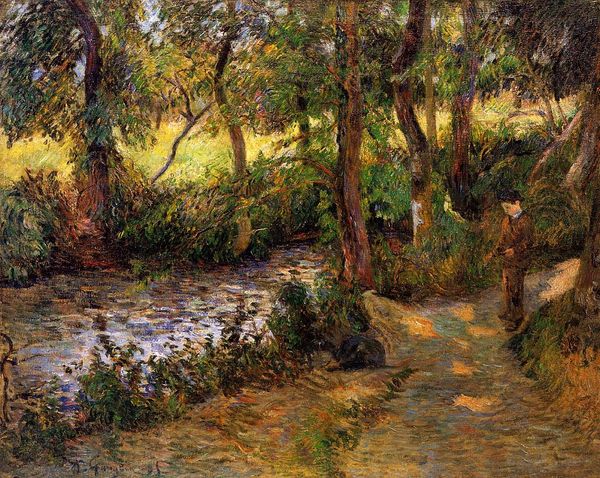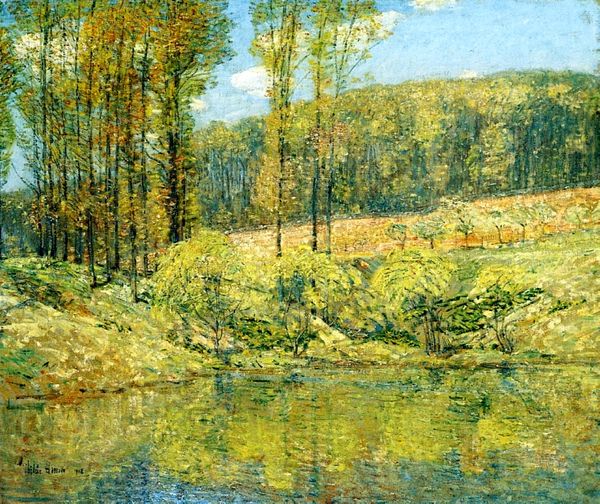
painting, plein-air, oil-paint
#
tree
#
lake
#
painting
#
impressionism
#
plein-air
#
oil-paint
#
landscape
#
house
#
impressionist landscape
#
nature
#
oil painting
#
plant
#
seascape
#
orientalism
#
natural-landscape
#
post-impressionism
#
realism
Copyright: Public domain
Curator: Standing before us is Paul Gauguin’s "Red roof by the water," painted in 1885. It's oil on canvas, currently held in a private collection. What's your immediate reaction? Editor: My first thought is tranquility. The scene is incredibly still. There is some visual tension though, I find the brushstrokes rough, especially around that red roof. It hints at the labor involved in producing such idyllic images. Curator: Labor indeed. Gauguin, influenced by Impressionism, was working en plein air. That direct engagement with the landscape, coupled with the burgeoning art market in Paris, shaped his approach to production. The social context is fascinating, wouldn’t you agree? Editor: Absolutely. And consider the role of these landscape paintings in shaping perceptions of rural life. How many potential patrons lived in cities, consuming these images, perhaps idealizing the lives depicted? Curator: The very materiality of the work speaks to that. Think of the pigments, industrially produced and readily available. This marks a shift from handmade to mass-produced colors, influencing the brightness and saturation. Editor: That also leads to a standardization, doesn’t it? While ostensibly "realistic," there’s a performative aspect. The paintings adhere to certain artistic conventions which had evolved in galleries and studios across France. Consider too how a privately owned artwork limits public access to such works, how that affects appreciation and understanding. Curator: Good point, it makes one reflect on its display context too. Imagine how differently the work would be perceived within a domestic space versus a major museum. It transforms its inherent meaning and historical importance. Editor: Exactly! The political economy of art – who owns it, how it’s displayed, and who has access – is essential for how meaning is created and communicated. The landscape as property, both depicted and possessed, creates another layer of political commentary, too. Curator: It’s striking how he captures light filtering through trees in this period. Considering what was happening with artistic circles, particularly regarding perceptions and use of color… Editor: Yes, it also speaks to how landscape was being reinterpreted in post-impressionism, departing from straightforward depictions to convey inner states, emotions, or personal symbolisms. That said, what exactly does this tranquil scenery reveal? Curator: What it reveals, and for whom, truly remains the crux of the issue! We appreciate those elements as we continue the tour.
Comments
No comments
Be the first to comment and join the conversation on the ultimate creative platform.
